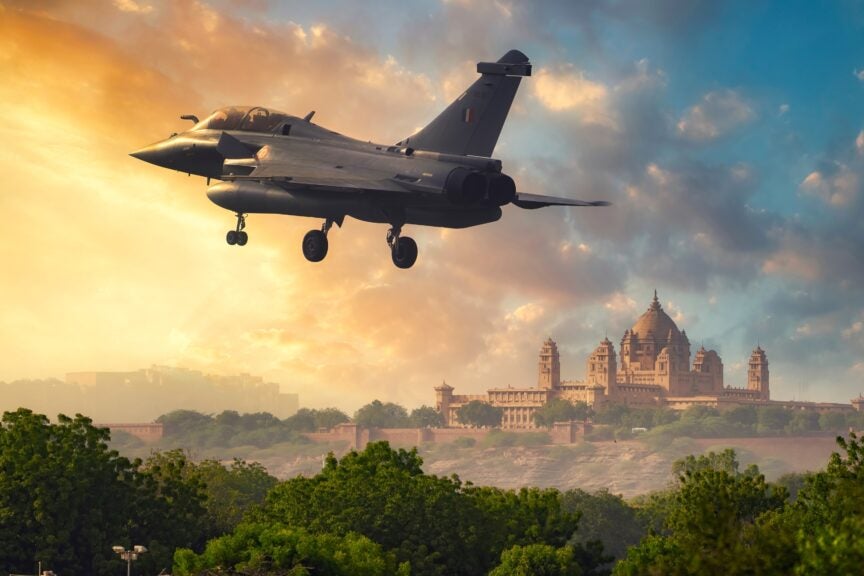India Responds to Rafale Jet Incident: Market Fallout for Defense Giants
India has formally addressed the downing of a French-made Rafale fighter jet by a Chinese aircraft near the disputed Himalayan border, triggering a sharp sell-off in Dassault Aviation shares and sending shockwaves through global defense markets. The October 12 incident—the first confirmed combat loss of a Rafale—has raised questions about the jet’s combat effectiveness and prompted investors to reevaluate positions in major defense contractors including Lockheed Martin.
Immediate Market Reactions and Defense Sector Impact
Within hours of India’s defense ministry confirming the incident, Dassault Aviation’s stock plummeted 8.7% on the Euronext Paris exchange, wiping €2.3 billion from its market capitalization. The sell-off spread to other defense stocks, with Lockheed Martin dipping 2.1% in New York trading as analysts speculated about potential shifts in global military procurement strategies.
“This event creates a perception challenge for Western fourth-generation fighters in potential conflicts with Chinese fifth-generation aircraft,” said defense analyst Priya Menon of the Stockholm International Peace Research Institute (SIPRI). “We’re seeing knee-jerk reactions, but the long-term implications will depend on the full combat data.”
Key immediate impacts include:
- Dassault’s order book under scrutiny (India has 114 pending Rafale deliveries)
- Increased volatility in aerospace and defense ETFs
- Renewed focus on electronic warfare capabilities
- Potential acceleration of India’s indigenous fighter programs
Technical Analysis of the Aerial Engagement
Preliminary reports suggest the Indian Air Force Rafale fell victim to a Chinese Shenyang J-16 equipped with advanced PL-15 long-range air-to-air missiles. The engagement occurred at approximately 28,000 feet altitude near the Line of Actual Control (LAC), where tensions have simmered since the 2020 Galwan Valley clash.
Aviation experts note the Rafale—considered among the most advanced 4.5-generation fighters—should have held technological advantages over the J-16 in several performance categories:
- Superior radar cross-section reduction (RCS)
- Advanced SPECTRA electronic warfare system
- Higher thrust-to-weight ratio
- More sophisticated Meteor air-to-air missiles
“The outcome suggests either exceptional Chinese pilot training, undisclosed J-16 upgrades, or possible Indian operational errors,” noted former RAF pilot and defense consultant Simon Whitcombe. “One engagement doesn’t rewrite aerospace doctrine, but it will force painful questions.”
Broader Implications for Global Defense Contracts
The incident arrives as multiple nations weigh major fighter procurement decisions. India’s $20 billion MRFA (Multi-Role Fighter Aircraft) competition—pitting the Rafale against Lockheed’s F-21 (a customized F-16 variant), Boeing’s F/A-18, and others—now faces potential reevaluation. Meanwhile, Indonesia’s pending $8 billion order for 36 Rafales hangs in the balance.
Historical precedent suggests such events can reshape defense markets. After a Turkish F-16 shot down a Russian Su-24 in 2015, global orders for F-16 upgrades surged 17% over the following 18 months. Conversely, when a Saudi F-15 was lost to a Yemeni missile in 2018, Boeing shares dipped 4% within a week.
Industry Responses and Damage Control
Dassault moved quickly to contain fallout, issuing a statement emphasizing that “a single incident cannot reflect the Rafale’s proven combat capabilities across 7 air forces.” The company highlighted the jet’s 100% mission success rate in French operations over Mali and Iraq.
Lockheed Martin, meanwhile, has quietly intensified marketing of its F-35 to Indian officials, despite New Delhi not formally considering the fifth-generation fighter. “The F-35’s sensor fusion and stealth characteristics provide decisive advantages in contested airspace,” a company spokesperson told Defense News.
Long-Term Market Outlook and Strategic Shifts
Defense analysts identify three potential trajectories stemming from the incident:
- Accelerated Modernization: Nations may fast-track purchases of fifth-generation fighters (F-35, Su-57) over upgraded fourth-gen platforms
- Electronic Warfare Focus: Increased investment in jamming systems and sensor upgrades for existing fleets
- Indigenous Development: Countries like India may prioritize homegrown solutions like the HAL AMCA fighter program
The Indian government has ordered a full combat debrief, with results expected within 90 days. These findings could prove pivotal—a 2019 Pakistani F-16 kill of an Indian MiG-21 ultimately led New Delhi to accelerate its Rafale purchases.
Investor Takeaways and Next Steps
While defense stocks often recover from single-event shocks (Lockheed bounced back within 3 months after a 2014 F-35 test failure), the Rafale incident underscores the sector’s event risk. Prudent investors should:
- Monitor India’s MRFA tender timeline (now likely delayed)
- Track Dassault’s order cancellations or confirmations
- Watch for Chinese aerospace export trends
- Consider defense ETFs for risk dispersion
As geopolitical tensions intensify globally, the defense sector remains a high-stakes arena where technological perception often drives markets as much as battlefield reality. For the latest defense procurement analysis, subscribe to our weekly security briefings.
See more Business Focus Insider Team

